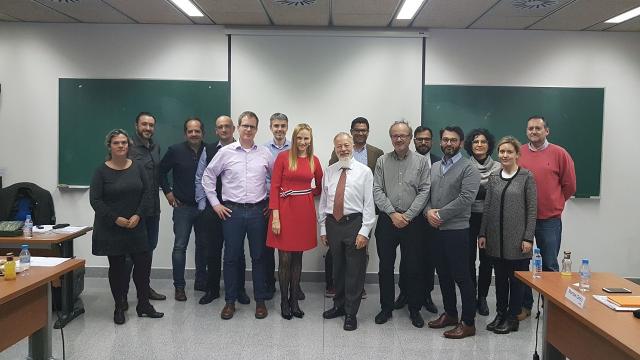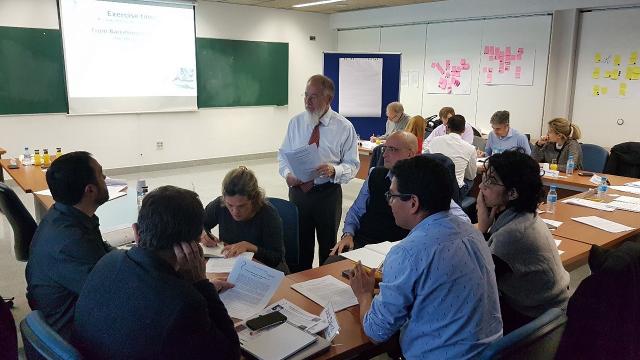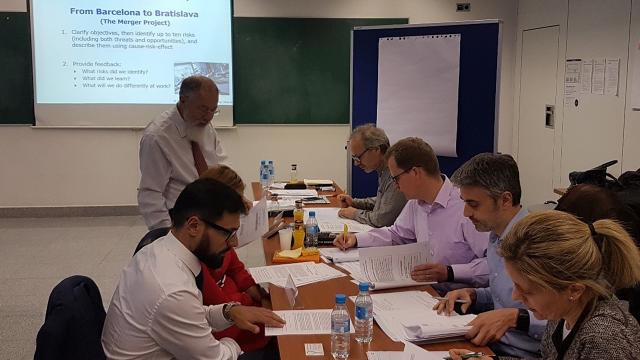Hillson conducted a MasterClass within the framework of the new Executive Program in Project Management, in which he was able to express with level and simplicity the art of risk management. During the magisterial and interactive class, The Risk Doctor proposed different challenges to the students, making them work as a team solving exercises based on real cases in a successful way.
David Hillson challenges the traditional thinking in its totality, exploring and expanding the typical definition that says that a risk is the possibility of a mishap or misfortune, of someone or something suffering harm or damage. For his part, Dr. Hillson redefines this concept and explains it with a broader vision applied to projects, which is crucial if you want to maximize the chances of success.
The Risk Doctor defines the risk concept as "any uncertainty that, if it occurs, could directly affect one or more objectives". This implies that there are other uncertainties that are irrelevant in relation to the objectives and should not be analyzed or managed. In addition, Dr. Hillson separates positive from negative risks; that is, in some cases, they could complicate the resolution of objectives while other events would help to specify them.
In this way, Hillson proposed to the students of the Executive Program in Project Management that his first big change in project management was to recognize that some risks are good and powerful. Positive risk helps us create value, improve performance and provide more benefits through contracts. When opportunities are identified, parties are encouraged to embrace risk more voluntarily, taking responsibility for positive risks and trying to manage them proactively to optimize performance.
In his lecture, The Risk Doctor divided the risk management process into six stages:
- Define the project objectives.
- Identify the uncertainties that matter, both threats and opportunities.
- Analyze and prioritize, according to its possible impacts in case it happens.
- Define actions on risks.
- Implement answers.
- Monitoring and control.
Dr. Hillson pointed out that one of the most common errors in the risk management process is identification (2). Having problems in this phase implies that the later stages will be doomed to failure; and, therefore, they will corrupt the course of the project. When identifying risks, many people confuse two independent concepts: risk and uncertainty. Risk is not the same as uncertainty. The key is to understand that risk can only be defined in relation to objectives.
To consolidate this idea, teams of six people were made during the MasterClass to use, discuss and analyze different risk identification techniques.
The Risk Doctor quickly achieved that the participants showed solidity identifying Causes - Risks - Effects; whereas later he implemented the methodology of the "Case", usually used in the programs of Masters of La Salle-URL, to put in practice the techniques SWOT and Assumptions / Constraints Analysis.
After integrating the techniques, The Risk Doctor emphasized in how to define and implement effective strategies to reduce threats and enhance opportunities, analyzing key criteria such as the cost of acting in risk versus not acting.
In this way, its approach proposes great benefits in the management of projects, potentially increasing the chances of success, as well as achieving better contracts and planning, improving team spirit and communication among others.
David Hillson - The Risk Doctor
David has more than 30 years of experience in advising large organizations and governments. He has worked in more than fifty countries offering services on how to create value through risk, using applied knowledge of risk management.
He has written eleven important books on risks, and has contributed significantly to many others. He has developed significant innovations that have been accepted worldwide as best practices, including the proactive inclusion of opportunities in risk management.



